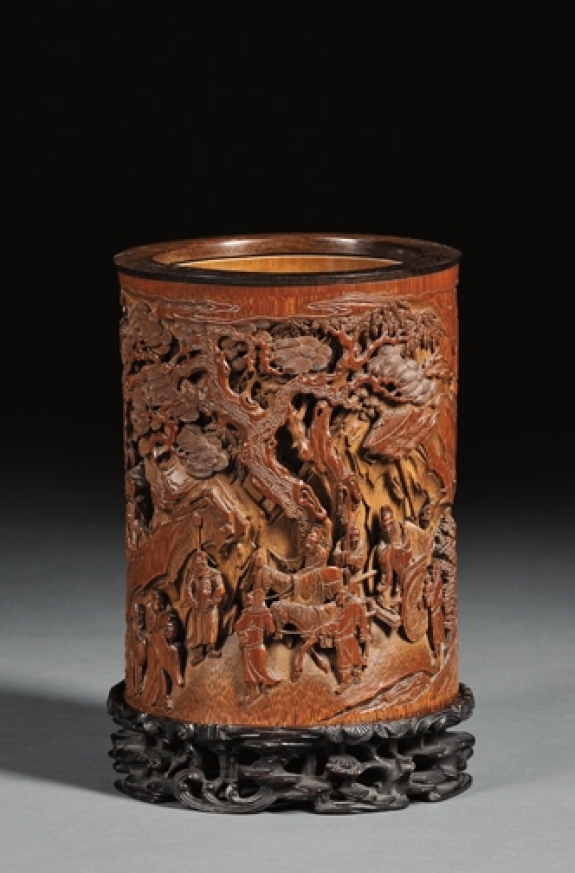Recent results at Skinner, Inc. in Boston offer further evidence that China is remaking the art market in every corner of the world. But can the Chinese art boom be sustained or is it a bubble that is bound to burst? Signs suggest that, short of radical realignment of the Chinese economy, the rally will continue though perhaps take different directions as supplies of classical Chinese art dwindle globally.
Consider this:
- The French auction market authority CVV reported in June that China had overtaken the United States as the biggest auction market in the world for art and antiques after sales in China more than doubled in a year to $10.8 billion.
- According to the World Wealth Report 2010, there are now 477,000 collectors in China.
- A study by the China Minsheng Bank claims that the Chinese spend at least $12.4 billion a year on art.
- According to the most recent Hunan report, mainland China has nearly a million millionaires.
Aggregated statistics about the art market are always hard to come by and these, like others, should be read with great caution. Nevertheless, there is no question that the sleeping dragon has awakened, as Skinner’s results underscore.
At $6.1 million, Skinner’s June 2-5 Asian art sale was the firm’s second largest grossing ever, in any category.
“When you consider that the top lot came in at $539,500 and only seven other lots exceeded the $100,000 mark, you can appreciate the incredible demand,” says Skinner department chief James Callahan, noting that the auction was 94 percent sold by lot.
Almost exclusively, Skinner’s buyers are mainland Chinese and their agents, a trend that has been increasing, says Callahan. Much of the buying at Skinner was in the room. Online bidding is steadily rising, too. Skinner has seen a five-fold increase in the dollar amount sold via the internet since the second quarter of 2009.
Skinner dominates its middle-market niche. “Sotheby’s and Christie’s have large sales of very good material, but also have high estimates and high pass rates. We have a more workable formula,” says Callahan. Paintings specialist Tianyue Jiang said prices at Skinner for old and modern Chinese painting of impeccable provenance rival results achieved in Hong Kong.
Eighteenth Century Qianlong carvings and porcelain and 19th and early 20th century paintings led sales at Skinner:
- Heavily carved with Immortals in a mountainous landscape, an 18th century bamboo brush pot, the sale’s cover lot, surpassed its $800/1,200 estimate to sell to a Chinese bidder for $539,500.
- A pair of Qianlong covered jars ornamented with landscape panels and foo dog lugs made $292,000 against an estimate of $600/800.
- A carved rhinoceros horn libation cup dating to the 18th century fetched $250,000 (est. $5/7,000).
- Carved with scholars amid rocky mountains, a 19th century wood sculpture on an ivory stand brought $106,650 (est. $5/700).
- Dating to the late 18th or early 19th century, a carved, white jade double-gourd vase and cover brought $142,200(est. $2/3,000).
aaaaa - Ex-collection of Rhode Island Senator Theodore F. Green , a mounted leaf illustrated with a landscape in ink and colors on silk soared to $159,975 (est. $300/500).
The Chinese art boom is playing out in auction houses large and small around the world. Witness this:
- At Schultz Auctions in Clarence, N.Y., on May 7, a Qianlong moon vase fetched $1.55 million from a Shanghai dealer. It had been expected to bring $100,000.
- In London between May 9 and 13, a series of record-breaking Asian art sales tallied more than $88 million, more than triple the 2010 take.
- Sales of Asian art at Christie’s Hong Kong reached $489 million between May 27 and June 1. Fully 70 percent of the sales went to Chinese buyers from the mainland, Hong Kong and Taiwan. Ninety percent of the buyers of modern Chinese paintings were Chinese.
- On June 20, Michaan’s 403-lot sale of Fine Asian Works of Art grossed just under $2 million, an all time record for the Alameda, Ca., based auction house. A pair of horseshoe chairs fashioned from 16th and 17th century elements brought more than 17 times estimate, selling for $310,000.
- On June 21, sales reached $11.5 million at Bonhams & Butterfield’s auction of Fine Asian Works of Art in San Francisco. A pair of 18th century Chinese huanghuali yoke-back armchairs contributed $1.5 million to the total.
Writing in the June issue of Art + Auction, Souren Melikian noted a lack of discrimination among Chinese buyers as a whole and identified nationalism as the force driving what he calls the repatriation of Chinese works of art to the “homeland.”
But most experts believe that Chinese tastes are steadily becoming both more sophisticated and more adventurous.
“The Chinese are expanding. They are beginning to buy whatever they may feel is a good investment,” says New York dealer Joel Frankel, who has been trading in Chinese art for 44 years.
“There is a learning curve, but knowing the Chinese, it won’t take long,” agrees Callahan, who sees, for instance, an uptick in sales of beautifully crafted but undervalued Japanese art to Chinese buyers.
Meanwhile, do not expect pre-sale auction estimates to adjust to the market’s new reality anytime soon. As a recent Facebook exchange made clear, it is a brave, new Chinese world out there.
“Nice to know that I’m not the only who can’t put estimates on Chinese antiques,” said a Midwestern auctioneer.
“No reason to try,” replied his Mid Atlantic colleague.
Write to Laura Beach at This email address is being protected from spambots. You need JavaScript enabled to view it..



